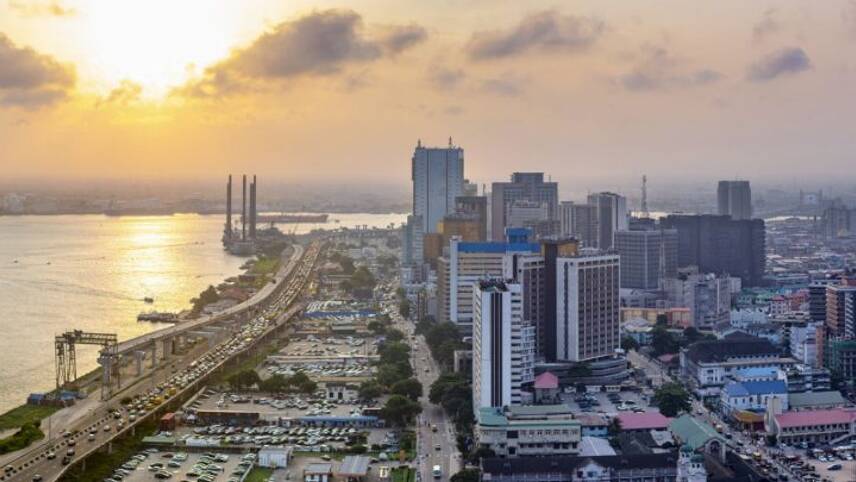Register for free and continue reading
Join our growing army of changemakers and get unlimited access to our premium content

After decades of inaction, the climate crisis has transitioned from a distant threat into a lived reality for millions of people around the world. Even now, as the impacts of extreme weather grow in severity, the UN has recently revealed that current pledges to reduce emissions are not enough to keep temperature rises below 2.5°C, far exceeding the limit of 1.5°C set in the Paris Agreement.
Cities are extremely vulnerable to the impacts of climate change and while strengthening pledges to cut emissions is essential, it is critical that cities look to ways to adapt to climate change for the health, safety and wellbeing of their urban residents.
Key climate threats to cities
Extreme heat is a pressing issue for cities as many of the materials that make up the fabric of our urban environments (such as concrete and tarmac) absorb and retain solar energy. This ‘Urban Heat Island Effect’ means that cities are likely to experience rising temperatures more acutely; worsening air quality, damaging infrastructure and disrupting the delivery of vital services.
Surface water flooding is another challenge for cities as hard, non-porous surfaces such as roads, buildings and pavements prevent rainwater from being absorbed. During extreme rainfall events, this can overwhelm drainage systems, increase the likelihood, extent and impact of flooding, and trigger landslides. This is a particular issue for cities where rapid, informal urbanisation has contributed to localised deforestation and weakening slopes.
With sea levels also guaranteed to rise, flooding of coastal urban areas is also becoming a major threat. This is a particularly pressing issue as over 10% of the world’s population lives in cities less than ten metres above sea level.
What are cities doing?
Despite the challenges, those involved in city planning across the world are developing innovative, collaborative approaches to urban adaptation.
With global temperatures rising every year, current urban infrastructure is ill-equipped to handle rising temperatures. In Athens, for example, extreme heat events have increased significantly in recent decades and, with 80% of the city covered by pavement and concrete, the urban landscape exacerbates the Urban Heat Island Effect.
To mitigate the intense heat, the city has developed the 2030 Athens Resilience Strategy and is working with the European Investment Bank to implement and restore urban forests and green corridor projects across the city. This infrastructure will reduce surface temperatures, boost biodiversity and make Athens a more comfortable place to live.
Another city that is deploying nature-based solutions is Freetown in Sierra Leone where extreme rainfall events and deforestation have caused devastating floods and landslides in the city, disproportionately impacting those living in informal settlements in and around the city.
To address this challenge the city has embarked on an ambitious, three-year reforestation campaign that aims to increase canopy cover by 50% across the city, with a particular focus on restoring hillsides and coastal mangroves. Since its creation in 2020, the programme engaged with communities to plant over 500,000 trees, shrubs, grasses and mangroves.
Certainly, every city is different and as such there is no one-size-fits-all adaptation approach. But, by working closely with local communities and businesses and recognising the challenges they face, local and regional governments can develop effective solutions that are specific to their residents.
In 2021, Thames Water commissioned the London Flood Review which examined the severe flooding which affected London following extreme rainfall in 2021. However, beyond just understanding the causes of flooding, the Review sought to examine how to support partnership between organisations and across London boroughs to reduce the risk of flooding. By working with local partners in this way, cities like London can ensure they can mitigate the unique impacts of climate change they experience.
The importance of local solutions and community engagement
Particularly for cities across the Global South, where both the physical realities of the climate crisis and the lack of funding opportunities are felt most acutely, greater collaboration and local engagement is vital to improve planning efficiency as resilient solutions are implemented.
Ultimately, the experiences of urban stakeholders are vital in holding the international community accountable to their funding commitments, and it is crucial that the voices of the most vulnerable communities be placed at the centre of these discussions. Climate adaptation is an increasingly global challenge so innovative approaches, experimentation, best practice and sharing lessons learned between cities will be key for improving urban resilience.



Please login or Register to leave a comment.